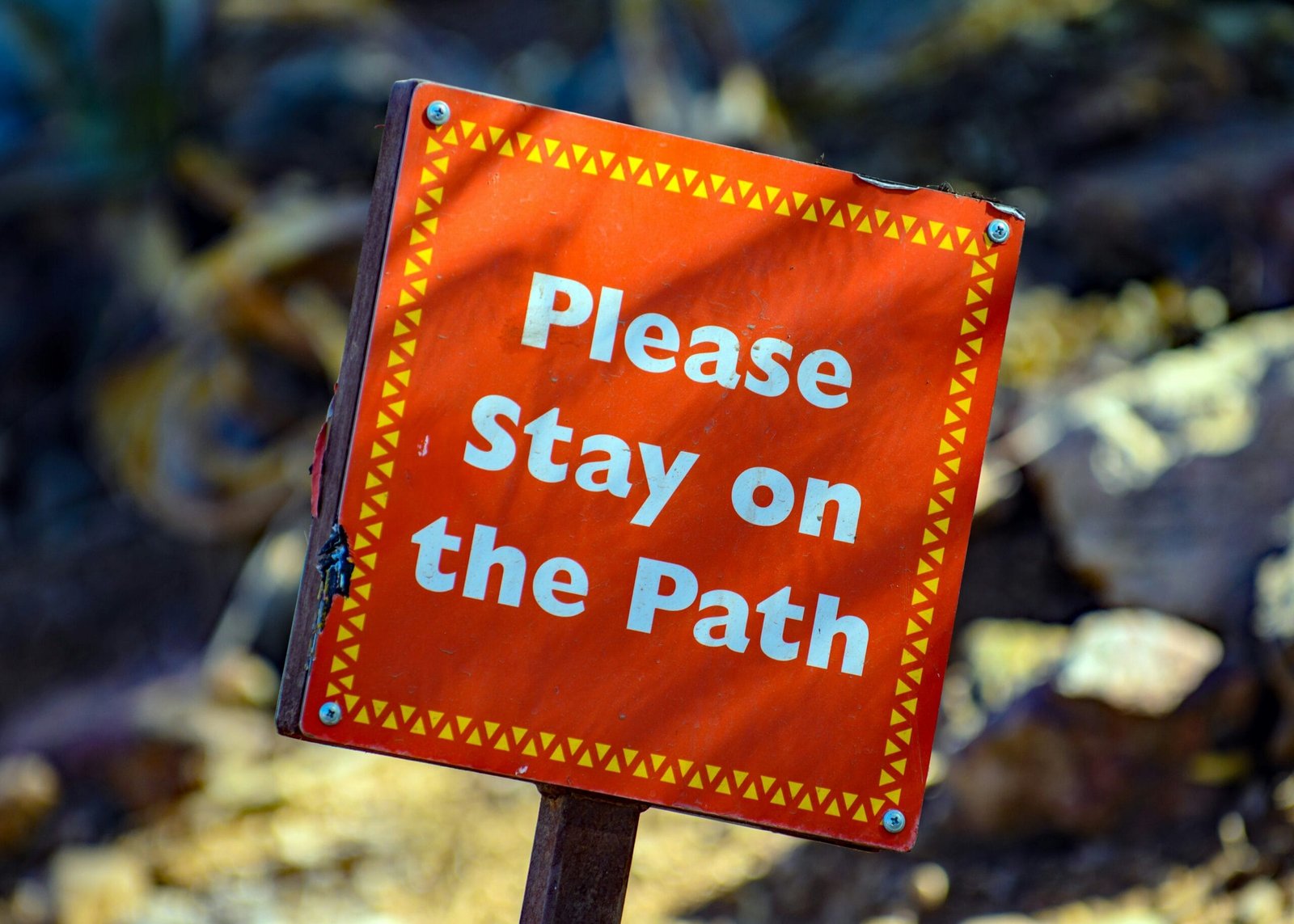
Photo by <a href="https://unsplash.com/@emmashell" rel="nofollow">Marie-Hélène LACHAUD</a> on <a href="https://unsplash.com/?utm_source=hostinger&utm_medium=referral" rel="nofollow">Unsplash</a>
Introduction to the Wounded Knee Massacre
The Wounded Knee Massacre, which occurred on December 29, 1890, stands as a significant event in American history, marking a tragic culmination of tensions between Native Americans and the United States government. This incident involved the killing of approximately 300 Lakota Sioux by U.S. Army troops near Wounded Knee Creek in South Dakota. The massacre is often seen as a consequence of the violent suppression of Indigenous culture and resistance, an event deeply rooted in the broader narrative of colonization and the marginalization of Native Americans.
To understand the Wounded Knee Massacre, it is essential to consider its historical context, particularly the series of broken treaties and policies implemented by the U.S. government aimed at assimilating Native Americans into Western society. The backdrop to this tragedy includes the centuries-long displacement of Indigenous populations, the Gold Rush, and military confrontations that exemplified the systemic attempts to eradicate Native culture and claim tribal lands. The Ghost Dance movement, which emerged in the late 19th century, is significant as it symbolizes hope and a revival of Native traditions amidst oppression, ultimately contributing to the tensions that led to the massacre.
The implications of the Wounded Knee Massacre extend far beyond its immediate aftermath. It profoundly affected the identity of Native Americans, as the event became emblematic of the struggles faced by Indigenous people in the United States. The massacre has become a focal point in discussions around sovereignty, justice, and the rights of Native peoples, reinforcing the importance of remembering this dark chapter in American history. The legacy of Wounded Knee continues to influence contemporary Native American activism and discourse as efforts to seek recognition, reparations, and healing persist within Indigenous communities today.
Understanding Roll Call Number 22
Roll call votes are a vital component of the legislative process in the United States Congress. These votes serve not only as a record of how members of Congress cast their votes on specific issues but also as a reflection of the broader political landscape and the sentiments of their constituents. Roll Call Number 22, specifically, is significant in the context of the Wounded Knee Massacre Memorial and Sacred Site Act (H.R. 165) as it showcases the level of support or opposition to this piece of legislation among lawmakers.
The importance of Roll Call Number 22 extends beyond the mere tally of votes; it represents the collective stance of Congress on recognizing and memorializing the historical injustices faced by Indigenous peoples. H.R. 165 aims to acknowledge the tragic events of the Wounded Knee Massacre and to establish a memorial at the site, thereby honoring those who suffered and died. The roll call vote allows constituents to see where their elected representatives stand on recognizing this pivotal moment in history.
In terms of legislative process, roll call votes help to ensure accountability among lawmakers. When they vote on significant issues such as H.R. 165, the implications of their decisions resonate with the communities they represent. Lawmakers are tasked with balancing their personal beliefs with the expectations and values of the constituents. For many, voting for or against a memorial dedicated to the Wounded Knee Massacre reflects a commitment to justice, reconciliation, and historical acknowledgment. The outcome of Roll Call Number 22 can serve as an indicator of the prevailing attitudes within Congress towards Indigenous issues, providing constituents with clear insights into their representatives’ priorities.
Ultimately, the significance of Roll Call Number 22 lies in its potential to influence future legislative actions regarding Indigenous rights and historical remembrance. As the context surrounding H.R. 165 continues to evolve, the implications of this roll call vote may resonate far beyond the walls of Congress, supporting a broader dialogue about healing and recognition in American history.
Overview of Bill Number H.R. 165
Bill H.R. 165, titled the Wounded Knee Massacre Memorial and Sacred Site Act, represents a vital legislative effort aimed at honoring the historical significance of the Wounded Knee site. This bill is specifically designed to establish this location as both a memorial and a sacred site, recognizing the tragic events surrounding the Wounded Knee Massacre of 1890, which claimed the lives of numerous Lakota Sioux and marked a dark chapter in American history. The bill’s primary goal is to ensure that this site receives the acknowledgment and commemoration it merits, as a testament to its importance in Native American history and in the broader context of U.S. relations with indigenous populations.
One of the critical provisions included in H.R. 165 is the establishment of a comprehensive plan for the site, which will guide its development and preservation as a memorial. This plan is expected to prioritize the input of Native American tribes, particularly the Oglala Lakota, ensuring that their voices and cultural heritage are front and center in the memorial’s design and implementation. Furthermore, the bill paves the way for the designation of the site as a protected area, which emphasizes its historical and cultural significance.
Additionally, the bill aims to facilitate educational programs and initiatives that will promote awareness of the events that took place at Wounded Knee. By fostering a deeper understanding of this historical event, H.R. 165 seeks to create a space where visitors can reflect on the past and consider its implications for the present and future. The intended outcomes of the legislation include not only preservation and education but also the promotion of reconciliation and healing between the U.S. government and Native American communities. By implementing these provisions, Bill H.R. 165 aspires to ensure that the legacy of the Wounded Knee Massacre is honored and remembered with the dignity it deserves.
The Role of Memorials in Healing and Remembrance
Memorials serve a vital function in the collective memory of communities affected by historical injustices. They not only commemorate events but also facilitate healing by providing a space for reflection and acknowledgment of past traumas. In particular, Native American communities have historically faced significant challenges resulting from colonization, violence, and systematic oppression. Memorials, such as the one proposed in the Wounded Knee Massacre Memorial and Sacred Site Act (H.R. 165), aim to honor those affected by such tragedies while fostering an environment conducive to healing.
The act of remembering through memorials goes beyond simple commemoration; it serves as an educational tool, fostering understanding among diverse audiences. By illuminating the histories and experiences of marginalized communities, these sites encourage public discourse and recognition of the injustices they faced. This educational aspect is crucial, especially in the context of Native American history, which has often been overlooked or misrepresented in mainstream narratives.
Furthermore, memorials create a sense of collective identity for affected communities. They provide a place where individuals can gather, share stories, and validate their experiences. This shared space allows for communal mourning and solidarity, reinforcing cultural identity and resilience amidst historical trauma. For many, these memorials become sacred places where ancestral ties and spiritual connections are maintained. Thus, memorials serve as conduits for cultural continuity and political advocacy, demanding recognition and reparations for the injustices suffered.
In summary, memorials play a crucial role in the processes of healing and remembrance, particularly within communities that have endured profound injustices. They foster reflection, educate the public, and provide spaces for cultural continuity, making them essential in the journey towards reconciliation and justice for affected populations.
Legislative Journey of H.R. 165
The legislative journey of H.R. 165, known as the Wounded Knee Massacre Memorial and Sacred Site Act, reflects a significant effort to address historical injustices through formal recognition and preservation. The introduction of the bill took place on January 25, 2021, by Representative Dusty Johnson, who emphasized the importance of honoring the memory of the victims of the Wounded Knee Massacre. This act aimed to establish the site as a memorial, thereby ensuring that the historical significance of the events of December 29, 1890, will not be forgotten.
Following its introduction, H.R. 165 was referred to the House Committee on Natural Resources, where it underwent thorough reviews. During the committee stage, various stakeholders, including Native American activists and historians, provided testimonies to highlight the urgent need for this legislative action. The committee subsequently voted favorably on the bill, making significant strides towards advancing the memorialization process.
One of the key moments in the legislative journey occurred during a floor debate in the House on April 14, 2021. Supporters of H.R. 165 pointed out that acknowledging this tragic chapter in American history is crucial for reconciliation and healing. They argued that the site serves not just as a memorial but also as an educational tool for future generations. Conversely, opponents raised concerns about potential impacts on land use and the management of the site, initiating a lively discussion that underscored differing perspectives on historical preservation.
Subsequent amendments were proposed, aiming to clarify the management responsibilities and funding mechanisms for the site’s maintenance. These discussions highlighted the commitment of lawmakers to ensure that H.R. 165 is a comprehensive solution to the challenges of recognizing and preserving such an important historical landmark. As of October 2023, the bill continues to garner attention, emphasizing the ongoing dialogue surrounding historical memory and the cultural significance of sites like Wounded Knee.
Community Impact and Support for the Bill
The Wounded Knee Massacre, a tragic episode in American history, deeply affected local communities, particularly the Lakota Sioux Nation. The establishment of the Wounded Knee Massacre Memorial and Sacred Site Act (H.R. 165) represents a pivotal movement towards recognizing the profound impact of this event on these communities. This bill aims not only to honor those who lost their lives on that fateful day but also to engage the communities directly in the process of healing and remembrance.
Grassroots movements have emerged as instrumental forces in advocating for the bill. Local residents, including descendants of the massacre victims, have organized initiatives to raise awareness about the significance of the site. Community gatherings, educational programs, and social media campaigns have been employed to inform both local and national audiences about the need for a memorial. These grassroots efforts illustrate a united front in recognizing the historical injustices faced by the Lakota people and the necessity of preserving their cultural heritage.
Statements from Native American leaders and organizations further emphasize the importance of this legislation. Many prominent figures have voiced their support, highlighting the critical need for acknowledgment of the past to foster reconciliation. Their advocacy underscores the desire for an official memorial that not only commemorates the lives lost but also serves as a site for education and awareness for future generations. Public sentiment regarding the memorial has been notably positive, with many community members resonating with the values of unity and healing that the establishment of the memorial embodies.
Ultimately, community involvement and leaders’ support for the Wounded Knee Massacre Memorial and Sacred Site Act reflect a collective aspiration to honor the past and build a foundation for understanding and respect for Native American history and culture. The voices of those affected continue to drive the momentum for this significant legislative effort. Through their combined advocacy, the bill seeks to ensure that the wounds of history are not forgotten, allowing communities to move toward a more inclusive future.
Opposition and Controversies Surrounding the Bill
The proposed Wounded Knee Massacre Memorial and Sacred Site Act, formally known as H.R. 165, has sparked a range of controversies and opposition from various factions. Critics raise significant logistical concerns, arguing that the development of a memorial at the site may pose operational challenges that diminish its intended reverence. Issues surrounding accessibility, maintenance, and the preservation of the site are at the forefront of their objections. Opponents emphasize that design plans need to be thoroughly evaluated to mitigate potential disruption to the natural landscape that holds historical significance.
Moreover, funding for the initiative has become a contentious point among detractors. Some community members and political figures question the financial viability of the project, suggesting that governmental financial resources may be better allocated to other pressing social issues facing Native American communities. This debate over earmarked funds reflects a broader conversation about priorities within federal spending, further complicating support for the memorial. Critics argue that until a detailed funding proposal is outlined that addresses potential financial shortfalls, backing for H.R. 165 should be reconsidered.
Another layer of opposition comes from differing perspectives on how historical events should be represented. Some indigenous groups caution that the bill may oversimplify the complexities of the Wounded Knee Massacre, potentially leading to a portrayal that fails to encompass the narratives of all those involved. They advocate for a more inclusive approach, ensuring that diverse viewpoints are acknowledged in the overall depiction of history. Such concerns highlight the importance of dialogue in the planning process, suggesting that the success of the memorial hinges on collaboration with the affected communities to achieve a comprehensive, accurate representation of this pivotal moment in history.
Future Implications of the Wounded Knee Site
The establishment of the Wounded Knee site as a memorial under the Wounded Knee Massacre Memorial and Sacred Site Act (H.R. 165) carries profound implications for the broader discourse surrounding Indigenous rights and the reconciliation process in the United States. Recognizing Wounded Knee not merely as a historical event but as a sacred site has the potential to transform national conversations about the acknowledgment of historical injustices faced by Indigenous populations.
As this memorial becomes a focal point for education and commemoration, it may foster a renewed public engagement with the history and ongoing impact of colonization on Indigenous communities. This recognition can serve as a catalyst for discussions about reparative justice and the ways in which historical grievances can inform contemporary policies. By presenting the Wounded Knee massacre in its proper historical context, there is a greater opportunity to understand its significance in today’s landscape of racial and social equity discussions.
Furthermore, the memorialization of Wounded Knee reinforces Indigenous sovereignty and rights by emphasizing the importance of Indigenous histories and experiences in the national narrative. It prompts a reevaluation of the dynamics of power and representation within the historical discourse, encouraging a more inclusive and accurate portrayal of America’s past. This shift can strengthen the voices of Indigenous peoples today, providing them with a platform to advocate for their rights and sovereignty in light of historical injustices.
Additionally, the establishment of the site as a memorial may spur similar initiatives across the country, encouraging communities to recognize and honor their historical injustices. This recognition can create a ripple effect, leading to enhanced cooperative relationships between Indigenous and non-Indigenous populations and promoting a collective movement toward healing and understanding. In conclusion, the future implications of designating Wounded Knee as a memorial hold promise for meaningful dialogue and progress in both reconciliation efforts and the acknowledgment of Indigenous rights.
Conclusion
Remembering the Wounded Knee Massacre is crucial not only for acknowledging the historical injustices faced by Indigenous communities but also for fostering ongoing dialogues about reconciliation and justice. The establishment of the Wounded Knee Massacre Memorial and Sacred Site Act (H.R. 165) plays a significant role in this respect. By recognizing this tragic event, the Act serves as a reminder of the importance of preserving historical memory and honoring the sacrifices made by the Lakota people and other Native American tribes during this dark chapter in U.S. history.
The passing of H.R. 165 represents more than just an act of legislation; it symbolizes a collective commitment to addressing the wrongs of the past. By designating the Wounded Knee site as a memorial and sacred place, the Act emphasizes the need for respect, understanding, and recognition of Indigenous history and trauma. This acknowledgment can be a powerful catalyst for healing within affected communities and can pave the way for more informed discussions surrounding Native American rights and sovereignty.
Moreover, remembering the Wounded Knee Massacre helps educate future generations about the historical context that shapes current social and political dynamics. It serves as a call to action for individuals to reflect on their roles in promoting justice and equity. In an era where discussions about race, identity, and inclusion are paramount, understanding events like the Wounded Knee Massacre becomes essential in cultivating a deeper appreciation of cultural diversity and the complexities of American history.
Ultimately, the importance of commemorating the Wounded Knee Massacre and supporting H.R. 165 cannot be understated. It is a vital step towards healing, reconciliation, and ensuring that the stories of those who endured such injustices are never forgotten.



